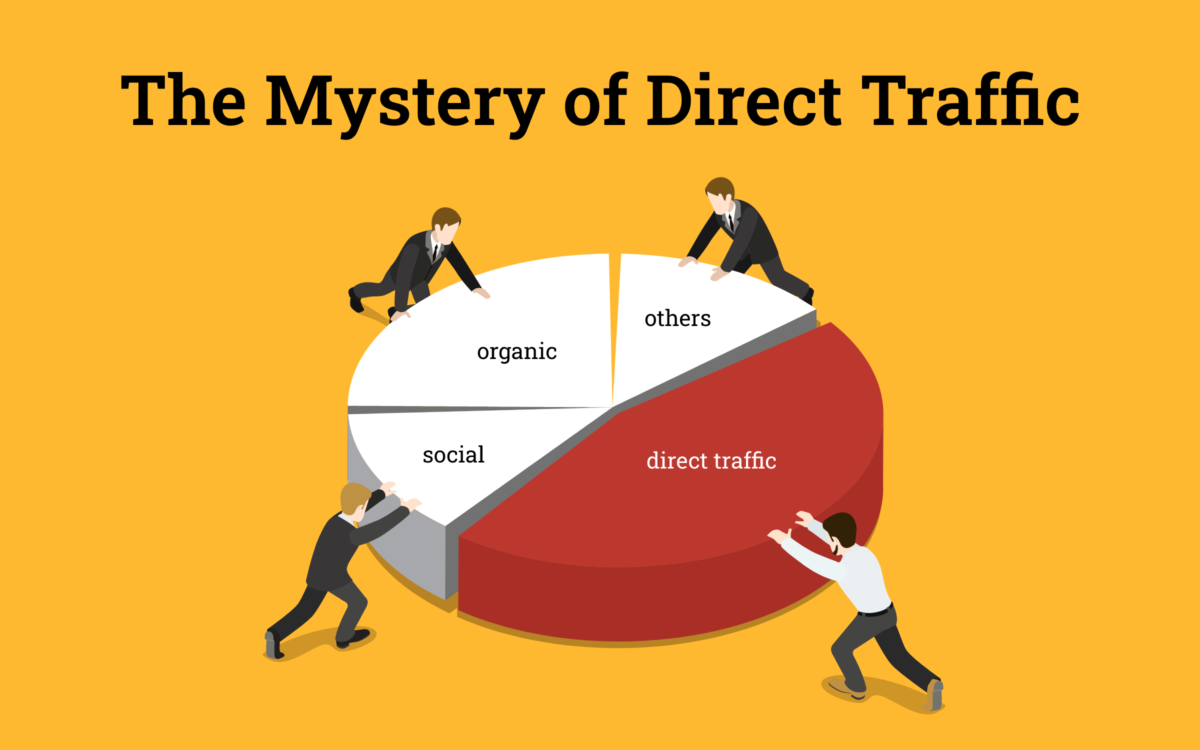Please keep in mind that Google Analytic can’t differentiates between “direct typing URL” and “unknown traffic source”. They are all known as “direct/unknown” in Google Analytics.
In other words, it’s direct traffic when Google doesn’t know the source of the traffic.
So, you shouldn’t be sad or happy when you have relatively high direct traffic before drilling down into the details. In most of the cases, Decision makers were getting mad about the direct traffic that are contributing to the conversions. Let’s look into possibilities of the traffic to be categorised as direct traffic:
False direct traffic
False direct traffic are the traffic that shouldn’t be categorised as direct traffic.
- Links from chat apps such as Discord and Messenger
- Links from e-mail clients like Outlook / G-Mail
- Links from native mobile apps
- Traffic from a HTTPS to HTTP site
- When a traffic from a secure (HTTPS) page to a non-secure (HTTP) page, no referrer data is passed. This is part of how the secure protocol was designed. Referrer data will be transferred for HTTP to HTTP, HTTPS to HTTPS, and HTTP to HTTPS but not HTTPS to HTTP.
- Improper redirection
- Meta refreshes or JavaScript-based redirects will wipe off the referral data.
- Anchor Link with noreferral HTML attributes
- We gain backlinks from time to time and we can’t control if the inbound links are marked as noreferral. A link with noreferral atrribute will not pass any referral information in the HTTP header, so your GA will take it as direct traffic
- Non-web documents
- Links from MS Word, Sheets, Powerpoint, PDFs, or even URL in a QR code do not pass referrer information. They will appear in your GA as direct traffic.
Minimise the false direct traffic
We are able to make direct traffic channel more meaningful by minimising the level of false direct traffic.
- Enforce HTTPS. You can always enforce HTTPS settings in your server configuration. .htaccess for windows environment, nginx.conf for LINUX.
- Manage you redirects. Avoid using client side redirects. Use 301 server-side redirects to preserve referrer data wherever possible.
- Use campaign tagging (UTM). Tag your campaign in any non-web documents, press releases, QR code. You can avoid most of the false direct traffic if you are using campaign tagging properly.
Conclusion
I hope this blog has been helpful. If you already have minimum false direct traffic and still struggling to find out the source, try some a/b test on your major traffic channel.
Often time, conversions that are coming from direct traffic can be confusing.
For instance, a client with 70% traffic from google ads has a 20 – 30% direct traffic. They suspect that most of the direct traffic is coming by the influence of the google ads. After paused the google ads for like a week, direct traffic falls below 10%. This explain that some of the direct traffic could be coming by the influence of your main traffic source. However, it’s different from site to site. You have to do your own test to figure it out.
